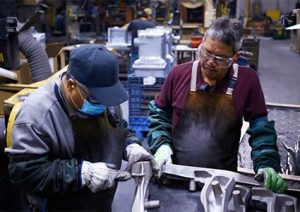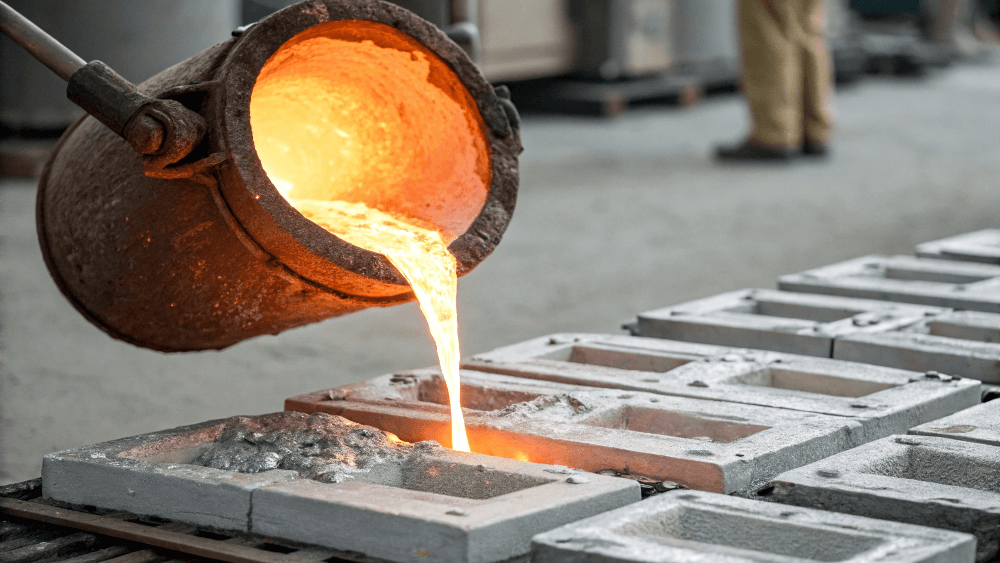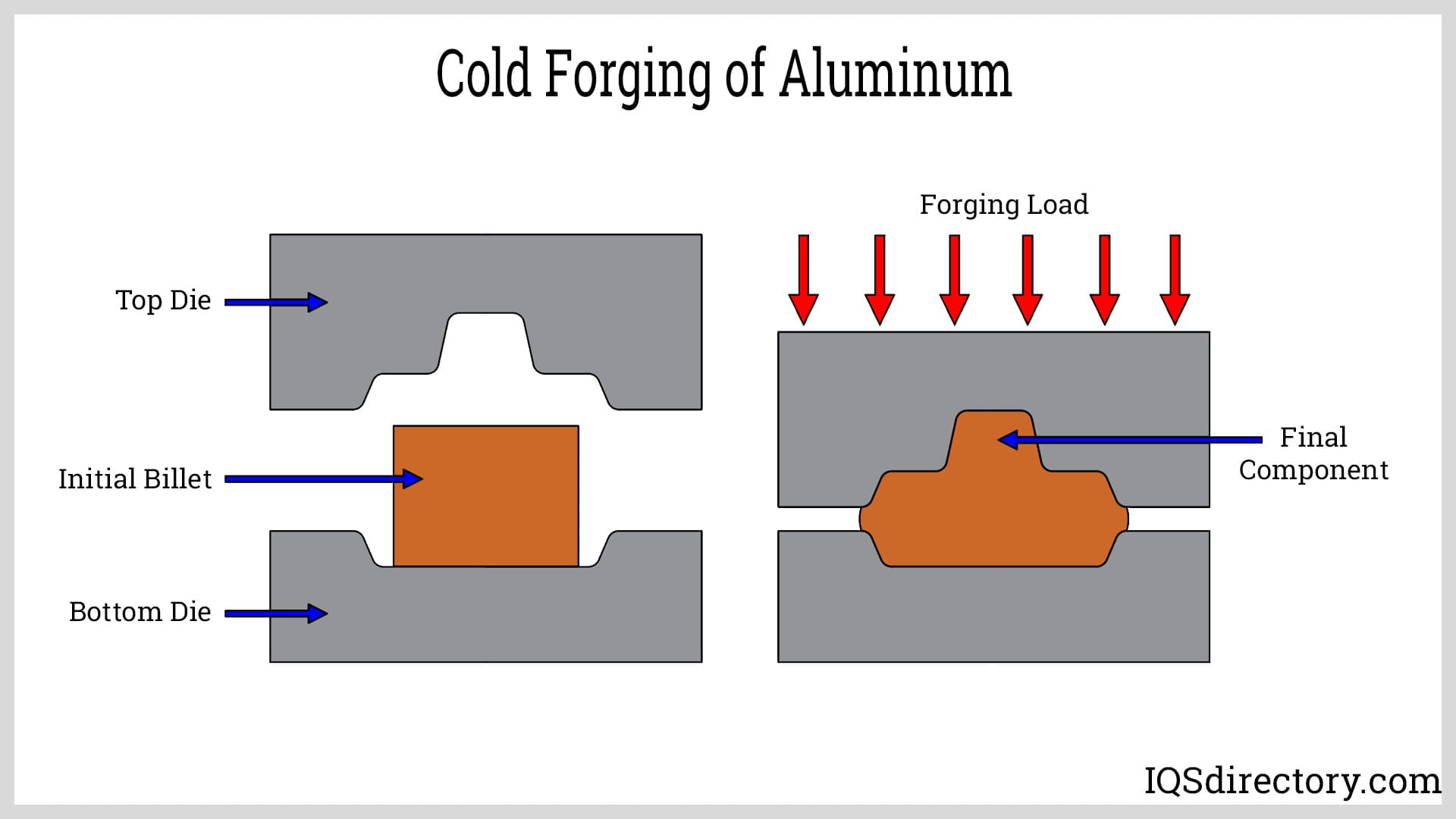Exactly How Aluminum Foundry Adds To Improvements in Aerospace Engineering
Aluminum shops are indispensable to developments in aerospace design. They generate lightweight, high-strength components that are important for contemporary airplane. Through sophisticated spreading techniques, these shops produce complex geometries that enhance architectural stability. Furthermore, the development of superior Aluminum alloys supports the industry's focus on fuel effectiveness and sustainability. Nevertheless, difficulties continue to be in the manufacturing process. Comprehending these aspects exposes the extensive impact of Aluminum on aeronautics's future.
The Importance of Lightweight Products in Aerospace Layout
As the aerospace sector continues to develop, the importance of light-weight products becomes significantly noticeable. The need for efficiency and sustainability drives designers to prioritize the usage of products that decrease overall weight without jeopardizing structural integrity. Lightweight products, particularly Aluminum, play a crucial duty in boosting gas effectiveness, improving payload ability, and increasing the overall performance of airplane.
The integration of these materials allows for ingenious styles, allowing suppliers to create even more wind resistant forms that can endure extreme problems. The decrease in weight not only reduces functional costs but likewise contributes to a reduced ecological impact, aligning with worldwide efforts towards sustainability in air travel.
Advanced Casting Techniques in Aluminum Foundries
Advanced spreading techniques in Aluminum foundries play a critical duty in aerospace design by enabling the production of accurate and light-weight parts. Innovations in mold style and precision casting procedures are necessary in achieving ideal performance and architectural honesty. Furthermore, the development of light-weight alloys enhances the total effectiveness and efficiency of aerospace applications.
Cutting-edge Mold Layout
Ingenious mold and mildew style plays an essential function in the efficiency and efficiency of Aluminum factories, particularly within the aerospace field. By leveraging advanced materials and methods, modern molds can be crafted to hold up against heats and pressures, guaranteeing peak efficiency throughout the casting procedure. These layouts frequently include complex geometries that allow for the manufacturing of lightweight yet structurally audio components, important for aerospace applications. Additionally, making use of computer-aided style (CAD) software program promotes accurate modeling, enabling factories to refine and mimic mold styles prior to physical production starts. This not only enhances the quality of actors components but likewise reduces waste and lead times, leading to considerable cost savings. On the whole, cutting-edge mold and mildew style is a cornerstone of progression in Aluminum Foundry technology for aerospace design.
Accuracy Casting Procedures
The efficiency of ingenious mold and mildew designs effortlessly integrates with accuracy casting processes, which are crucial for producing high-quality Aluminum components in aerospace design. These processes, consisting of sand casting, die spreading, and financial investment casting, ensure the development of complicated geometries with tight resistances. Advanced techniques like vacuum cleaner casting and pressure pass away casting boost the honesty and surface finish of the final products. Accuracy spreading lessens material waste while making best use of the mechanical residential or commercial properties of Aluminum, critical for aerospace applications. On top of that, using real-time monitoring and advanced simulation tools throughout the spreading procedure permits instant changes, bring about enhanced quality assurance. Collectively, these accuracy spreading procedures setting Aluminum factories at the center of aerospace technology, sustaining the sector's demand for integrity and performance.
Light-weight Alloy Growth
As aerospace designers look for to boost fuel efficiency and efficiency, light-weight alloy growth comes to be an essential focus in Aluminum foundries. These foundries employ advanced casting strategies to produce alloys that provide superior strength-to-weight ratios. Technologies in alloy composition, including the unification of aspects like lithium and magnesium, make it possible for the production of products that withstand extreme conditions while lowering general aircraft weight. Techniques such as die spreading and investment casting promote the accuracy manufacturing of intricate forms, which are critical for aerospace applications. Furthermore, recurring research study intends to enhance these alloys for improved mechanical residential properties and increased durability. By prioritizing light-weight alloy advancement, Aluminum foundries considerably add to the development of aerospace engineering, paving the way for a lot more effective and lasting airplane layouts.

Enhancing Architectural Honesty With Aluminum Components
Aluminum elements provide significant advantages in improving architectural integrity within aerospace design. Their lightweight nature adds to total efficiency while keeping strength, which is essential for airplane efficiency. Furthermore, the stress resistance buildings of Aluminum help assure the sturdiness and reliability of aerospace frameworks under numerous operational problems.
Light-weight Material Conveniences
While conventional materials often jeopardize weight for stamina, utilizing Aluminum parts in aerospace engineering provides significant benefits in architectural integrity. Aluminum's light-weight nature adds to general design effectiveness, permitting even more streamlined airplane that consume much less gas, thus enhancing sustainability. The product's exceptional strength-to-weight proportion warranties that elements keep toughness without including unnecessary mass. This high quality fosters boosted efficiency and agility in flight, along with enhanced read haul capabilities. Additionally, Aluminum's resistance to corrosion prolongs the life expectancy of aerospace frameworks, lowering maintenance prices and improving safety and security. As suppliers significantly embrace Aluminum alloys, the aerospace sector experiences a transformative shift in the direction of more effective and effective engineering remedies that focus on both performance and ecological obligation.
Anxiety Resistance Features
Various products possess unique properties, Aluminum's extraordinary tension resistance stands out as an important factor in improving the architectural stability of aerospace parts. This resistance plays a crucial function in ensuring that airplane can hold up against numerous operational stresses, including fatigue, influence, and ecological conditions. Aluminum alloys, especially engineered for aerospace applications, show high tensile toughness while maintaining lightweight characteristics, allowing designers to design extra reliable frameworks - Aluminum Foundry. In addition, the capability of Aluminum to endure cyclic loading without considerable contortion contributes to the longevity and dependability of aerospace elements. As advancements proceed in Aluminum Foundry techniques, the growth of stress-resistant Aluminum components guarantees further enhancements in performance, safety and security, and efficiency across the aerospace industry, strengthening Aluminum's duty as a recommended material in contemporary design
Fuel Performance Improvements Driven by Aluminum Innovations
As the aerospace market looks for to improve fuel performance, innovative uses Aluminum have actually become a vital option. Aluminum's lightweight nature significantly decreases aircraft weight, permitting lower gas consumption throughout trip. This decrease in weight is essential, as even small decreases can bring about significant improvements in general gas economic climate.
Advanced Aluminum alloys, designed for improved stamina and durability, allow makers to develop parts that maintain structural integrity while minimizing mass - Aluminum Foundry. Furthermore, the assimilation of Aluminum in airframes and engine components assists in enhanced aerodynamics, adding to lowered drag and raised performance
The fostering of Aluminum in aerospace not just meets the demand for fuel-efficient design yet also lines up with regulatory stress for lower emissions. As these developments continue to advance, they play a significant duty in setting new criteria for fuel effectiveness, making certain that the aerospace sector can meet expanding financial and ecological challenges.

The Function of Aluminum in Sustainable Air Travel Practices
The raising focus on lasting aviation techniques has placed Aluminum as a crucial material in the pursuit for greener airplane design. Recognized for its lightweight residential or commercial properties, Aluminum considerably decreases airplane weight, leading to lower gas usage and exhausts. Its recyclability additionally improves its sustainability account, as Aluminum can be reused forever without loss of quality. This characteristic supports a circular economic climate within the aviation industry, reducing waste and resource depletion.
Improvements in Aluminum alloys have actually boosted their toughness and corrosion resistance, allowing for check longer service life and minimized upkeep demands. These innovations help with the development of a lot more reliable airplane structures, contributing to overall sustainability initiatives. Furthermore, Aluminum's thermal conductivity plays a crucial function in energy-efficient designs, enhancing systems such as heat exchangers. Collectively, these attributes underscore Aluminum's pivotal function ahead of time sustainable aviation, straightening with international initiatives focused on reducing the ecological impact of air traveling.
Challenges Dealt With by Aluminum Foundries in Aerospace Manufacturing
While Aluminum factories play a necessary role in aerospace production, they face substantial challenges that can influence manufacturing performance and quality. One major difficulty is the strict high quality control requirements called for in the aerospace sector. Any kind of problem can compromise safety and efficiency, necessitating rigorous inspection procedures that prolong production timelines. Furthermore, factories typically compete with fluctuating resources prices, which can impact pricing and profitability. The complexity of Aluminum alloys used in aerospace applications more complicates the manufacturing process, as precise formulas are vital for accomplishing preferred mechanical residential properties. In addition, competent labor shortages prevent the capacity to maintain top notch production degrees. Environmental laws impose restrictions on exhausts and waste administration, requiring foundries to invest in lasting methods, which can be cost-prohibitive. These factors collectively produce a landscape where Aluminum foundries have to continuously adapt to fulfill the developing needs of aerospace manufacturing while guaranteeing safety and security and compliance.
Future Patterns in Aluminum Applications for Aerospace Engineering
With innovations in modern technology and enhancing demands for effectiveness, the future of Aluminum applications in aerospace design is poised for significant transformation. The combination of cutting-edge Aluminum alloys and compounds is expected to boost strength-to-weight proportions, leading to even more fuel-efficient aircraft designs. On top of that, improvements in additive manufacturing methods will certainly enable the production of complicated Aluminum structures that were previously difficult, enhancing efficiency and lowering waste.

Lasting techniques will play a crucial duty, with a growing focus on reusing Aluminum to reduce environmental effect. The aerospace sector is most likely to accept smarter manufacturing processes, such as automation and expert system, ensuring better and accuracy in Aluminum parts. In addition, collaborations in between Aluminum foundries and aerospace firms will certainly foster r & d, leading the way for new applications that satisfy the stringent demands of modern aerospace engineering - Aluminum Foundry. In general, the future looks assuring for Aluminum's duty in forming the skies
Frequently Asked Inquiries
What Are the Environmental Influences of Aluminum Manufacturing in Aerospace?
The ecological impacts of Aluminum manufacturing in aerospace include considerable power usage, greenhouse gas exhausts, and habitat disruption. Furthermore, mining procedures can result in dirt deterioration and water contamination, increasing worries concerning sustainability and environmental equilibrium.
How Does Aluminum Compare to Various Other Products in Aerospace Applications?
Aluminum offers a special combination of light-weight buildings, deterioration resistance, and cost-effectiveness contrasted to various other materials. Its high strength-to-weight ratio makes it specifically helpful for aerospace applications, enhancing gas efficiency and total efficiency in airplane layout.
What Certifications Do Aluminum Foundry Workers Demand for Aerospace Projects?
Aluminum Foundry workers need specific training in metallurgy and spreading techniques, along with knowledge of aerospace sector standards. Accreditations in quality assurance and safety procedures are additionally vital to assure compliance with rigid aerospace project requirements.
Are There Any Type Of Security Interest In Making Use Of Aluminum in Aerospace Engineering?
Security worries relating to Aluminum in aerospace engineering include vulnerability to tiredness, anxiety, and deterioration cracks. Correct treatment and alloy selection are important to minimize these dangers, making certain architectural stability and overall safety in aerospace applications.
How Does Aluminum Recycling Advantage the Aerospace Sector?
Aluminum reusing substantially profits the aerospace industry by decreasing material costs, reducing ecological effect, and conserving energy. This sustainable method boosts the sector's performance while promoting using light-weight, high-performance parts in airplane production.
Advanced spreading methods in Aluminum factories play an important role in aerospace engineering by enabling the manufacturing of light-weight and specific parts. Innovative mold layout plays an important role in the effectiveness and performance of Aluminum foundries, specifically within the aerospace market. As aerospace designers seek to improve fuel effectiveness and efficiency, lightweight alloy development becomes a necessary focus in Aluminum factories. Aluminum alloys, especially crafted for click to read aerospace applications, show high tensile stamina while maintaining light-weight features, making it possible for designers to make extra efficient structures. Collaborations in between Aluminum shops and aerospace business will certainly cultivate research study and development, paving the means for new applications that fulfill the rigid demands of modern-day aerospace engineering.